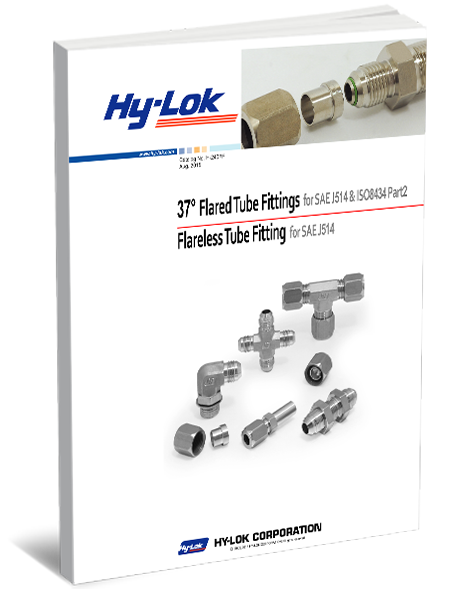Since 1977, Hy-Lok has been manufacturing high-quality, durable valves and fittings for the natural gas industry. Among our vast catalogue of superior fluid system components, check valves play an important role in the performance of natural gas distribution systems.
Below, we’ll discuss how natural gas check valves work, their applications and functionality, how users can properly maintain valves on their fluid systems, and why Hy-Lok’s valves are the best choice for a secure, no-leak operation. Keep reading to learn more.
How Do Natural Gas Check Valves Work?
Check valves are designed to control liquid and gas flow in CNG (Compressed natural gas) systems for commercial and industrial processes. This valve has two ports, one for entry and one for exit, to prevent backflow from the liquid being pushed through the wrong end. This ensures a consistent stream from the gas reservoir to its destination.
Check valves run based on cracking pressure, the minimum pressure needed to open the valve’s inlet port and allow gas to flow through the outlet port. This pressure is measured using psi (pound-force per square inch), determining the size and type of valve required for specific uses.
A natural gas check valve, such as the 700H series from Hy-Lok, is the appropriate choice for a CNG system to ensure direct flow control.
Principles of Operation
Gas check valves comprise several working parts that contribute to their utility when applied to natural gas systems. The 700H Series gas check valve from Hy-Lok has 6 main parts, which we’ll break down below:
Orifice: supports the maximum flow designed for the minimum pressure drop. This includes the flow dia, from 4.8mm to 15.0mm
Poppet: This feature provides a leak-tight shutoff function with an elastomer seal
Poppet Stopper: this component minimizes the stress from the springs
Springs: these support cracking pressure in the 1/3 to 25psig range
O-Ring and Back-Up Rings: these rings ensure the closure of the valve at its rated pressure
Variety of End Connection: there are several end connectors for different CNG systems, including Hy-Lok tube fittings, male and female NPT, ISO tapered threads, ZCO ends, and Metal Gasket Seal ends
Applications & Uses
Natural gas check valves can be applied to any system that uses compressed natural gas. Some applications for natural gas check valves include:
- Fueling stations
- Storage tanks
- Piping and distribution systems
- Heat and power generators
- Refrigeration systems
- Aircrafts
- Buses, trucks, vans & other CNG-powered vehicles
Tips for Check Valve Maintenance
Once your gas check valve has been installed, it’s important to keep on top of maintenance. If your valve is neglected, you may run into issues with your CNG system, such as extensive leakage, which can lead to further damage.
To keep your check valve in working order, make sure to:
- Regularly clean the valve with a towel, or use a wire brush if there’s a build-up of debris
- Conduct regular inspections to spot potential problems, such as leaks, broken pieces, corrosion, open and close malfunctions, pressure and temperature issues, and other potential signs of damage or wear
- Regularly disassemble and clean the valve to remove embedded debris and buff out scratches
- Apply lubricant to your valve
- Add protective insulation to manage fluctuations in temperature
Choose Hy-Lok for High-Quality & Durable Natural Gas Check Valves
At Hy-Lok, we manufacture CNG & fluid system components that are built to last. We provide secure and leak-free solutions with our gas check valves, manufactured to endure varied environmental conditions and regular wear and tear to meet the high demands of the natural gas industry.
Our 700H Series compressed natural gas check valve is 100% factory tested, certified according to AGA/CGA NGV 3.1 standards, and is an ideal component for your CNG system. If you’d like to learn more about this and other check valves in our catalogue, visit the Products page on our website.




